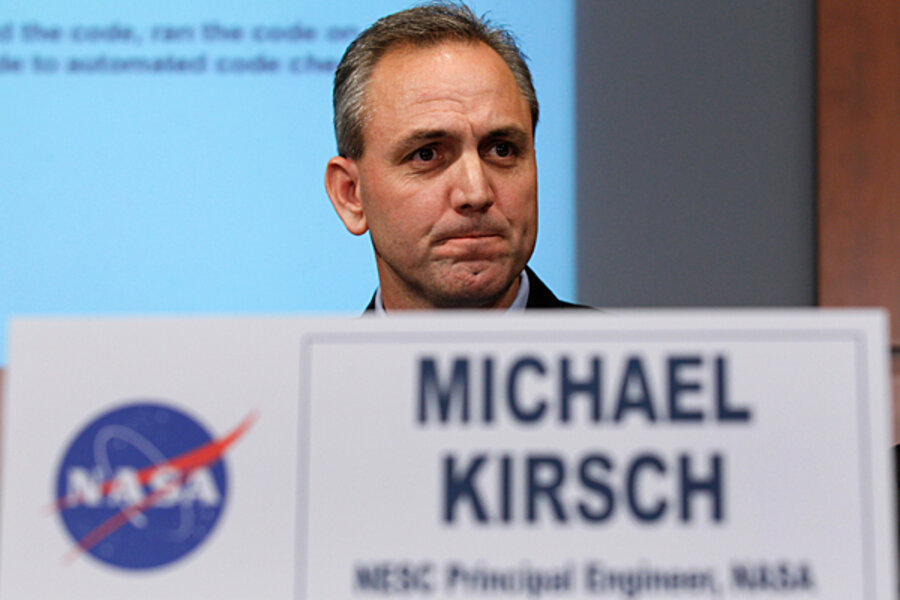Toyota recall investigation: NASA says electronics are not to blame
Loading...
The results of a NASA study suggest faulty electronics were not to blame for the unintended acceleration in Toyota vehicles that caused the company to recall nearly 8 million U.S. cars last year.
In March 2010, at the time of the recall, Toyota was unsure of the cause behind a spate of cars that would speed up without the driver's help. The Toyota problem was linked to at least 50 reported fatalities, according to the National Highway Traffic Safety Administration (NHTSA).
Eventually, the NHTSA identified two mechanical defects behind the malfunction: "sticking" accelerator pedals and a design flaw that caused the pedals to become trapped by floor mats.
However, the NHTSA asked NASA engineers with expertise in electronic and software systems to look into consumer claims that electronic systems may have played a role.
"NASA found no evidence that a malfunction in electronics caused large unintended accelerations," Michael Kirsch, principal engineer and team leader of the NASA study, said in a statement.
The results of the NASA study were announced today (Feb. 8).
The NASA personnel were called on not only for their technological know-how, but for their experience in probing into the root cause of a problem. The NASA study was led out of the agency's NASA Engineering and Safety Center at NASA's Langley Research Center in Hampton, Va., which was established in 2003 to investigate the causes of the space shuttle Columbia accident, in which seven astronauts lost their lives when the orbiter was destroyed re-entering Earth's atmosphere.
The NASA team examined computer-controlled electronic systems, electromagnetic interference and software to assess whether any of these systems played a part in causing the cars to accidentally accelerate.
"We enlisted the best and brightest engineers to study Toyota's electronics systems, and the verdict is in," U.S. Transportation Secretary Ray LaHood said.
The NASA Engineering and Safety Center has investigated about 400 independent technical assessments. More recently, the team helped out during the Chilean mining situation to suggest design requirements for a system to rescue the trapped miners.
You can follow SPACE.com senior writer Clara Moskowitz on Twitter @ClaraMoskowitz.





